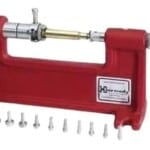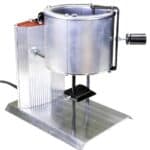
Introduction to chamfering
Chamfering brass refers to the process of beveling the inside and/or outside edge of a casing mouth. This process is done for a few key reasons:
- Ease of Bullet Seating: Using a chamfer tool helps ensure that the bullet can be seated smoothly into the casing. The beveled edge guides the bullet into the casing, reducing the chance of damaging the bullet in the process.
- Preparation for Crimping: Chamfering can help prepare a casing for crimping, which is the process of securing the bullet in the casing.
- Removal of Burrs: The process of cutting or otherwise working with brass can leave small fragments or edges (burrs). These can interfere with the bullet seating process and potentially cause safety issues. Chamfering helps to remove these burrs.
In reloading, there are specialized chamfering tools used to perform this task. They come in a variety of styles but often look like a conical or angled cutter attached to a handle. Some reloading kits also include a chamfering tool as part of the standard equipment. It's important to note that care should be taken not to over-chamfer the case mouth as it may cause issues such as thinning the brass too much.
To learn more about reloading, join a forum and participate in discussions (or just read along). An excellent reloaders forum can be found here.
If you know of any forums or sites that should be referenced on this listing, please let us know here.




